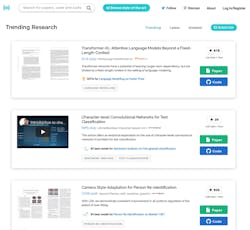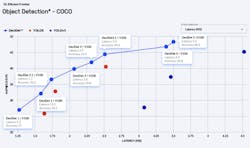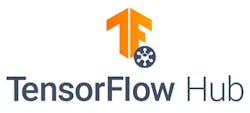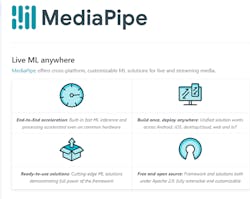Artificial Intelligence and Its Impact on the Public Sector
What you’ll learn:
- What is open-souce artificial intelligence?
- How is public AI being used and what has it accomplished?
Artificial intelligence (AI) is becoming increasingly prevalent in our daily lives. From the virtual assistants in our phones to the self-driving cars on our roads, AI applications will continue to intertwine in almost every area. And as AI technology develops and becomes more sophisticated, its presence in our lives will likely increase. We use it as digital assistants in social media, email, and web searches. It’s found in semi- and fully autonomous vehicles, stores, and services, and can be applied to tailor specific ads based on our shopping habits.
Most all forms of AI in use today were created by academic institutions, governments, and companies over years of development. Machine learning, in particular, has proved beneficial in a wide variety of fields, including agriculture, bioinformatics, software engineering, and more. While machine learning has furthered those institutions, they’re starting to emerge as free-to-use platforms for just about anything in the public sector.
Public artificial intelligence is a field of AI research and development focused on creating AI technologies that anyone can use to build applications and services. They are machine-learning models made available to the public by organizations such as Facebook, Google, and Microsoft. These models can be used by anyone for free to build applications and services.
With public AI models, users of any background or technical skill level are able to benefit from the knowledge and experience of AI researchers who worked on similar problems and applications. These models have already undergone a rigorous AI training process and have been developed and optimized by computer vision experts.
Public AI models can be customized and extended with a bit of modification to fit users’ needs and requirements. One of the most significant benefits of pre-trained public AI models is faster time to deployment. Rather than spending hours, days, or weeks training AI models, users can rapidly iterate and experiment with public AI models, spinning them up in minutes. With that in mind, we will look at some of the open-source, pre-trained machine-learning models in use today.
Open Model Zoo
Open Model Zoo (Fig. 1) is a collection of pre-trained models that can be used with the OpenVINO toolkit to accelerate the development and deployment of deep-learning applications. The models are optimized for different types of hardware (CPU, GPU, VPU, FPGA) and cover a wide range of applications, from image classification and object detection to pose estimation and text recognition. They’re designed to enable developers to accelerate the development and production deployment process.
The models in the resource can be divided into two categories: Intel pre-trained models and public pre-trained models. In total, there are over 200 models in the repository covering a variety of tasks such as object detection, place recognition, text-to-speech, colorization, and more. Users also can leverage dozens of demo application templates.
To make it more efficient, the Model Optimizer converts models into an Intermediate Representation (IR) format that can be used with the Inference Engine. The Inference Engine, which is a a C++ library with a Python API, runs the IR on the hardware. There are also tools for quantizing models, printing information, and copying datasets from an installed location. Furthermore, Open Model Zoo provides an accuracy checker to validate model accuracy.
Papers With Code
Papers With Code (Fig. 2) is an online repository of over 1 million research papers and their corresponding source code, making it a valuable resource for academics and practitioners. The community-led open resource acquires machine-learning papers, codes, datasets, methods, and evaluation tables. Although the core team of the project is based in Meta AI Research, anyone across academia and industry can contribute.
The site is designed to be searchable and browsable, with papers organized by topic, venue, and year. Users also can search for papers by keyword and filter results by language and framework. Popular benchmarks, submissions, and developments made on each task and dataset are viewable, too. Currently, over 700 papers with code listed are on the site, which continues to grow monthly.
Hardware Aware Model Zoo
Deci’s Hardware Aware Model Zoo (Fig. 3) is an end-to-end deep-learning development platform that allows developers and engineers to create, optimize, and deploy models to any hardware and environment. The platform includes a number of features that make it easy to get started, including a drag-and-drop interface, automatic hyperparameter optimization, and one-click deployment to any environment.
Also in the mix is an automated model optimization engine that can optimize models for various hardware types, including CPUs, GPUs, FPGAs, and ASICs. Users are able to select a target inference hardware and see its runtime performance results, including throughput, latency, model size, and memory footprint for various hardware.
If the task doesn’t fit into one of the existing classes, one of the pre-trained models may be selected and fine-tuned for the said use case. And there are a few generic models suitable for a wide range of tasks. In addition, users can find a set of open-source models that are already trained and fine-tuned for specific tasks, such as image classification, object detection, and text classification.
TensorFlow Hub
TensorFlow Hub (Fig. 4) is an online library for training and inference of deep neural networks. Users can discover, reuse, and share trained models. For example, the site provides Hub modules to utilize as a self-contained piece of a TensorFlow graph, along with its weights and assets, which can be reused across different tasks in a process known as transfer learning.
The Hub modules can handle various tasks, including pre-trained models for feature extraction. These leverage a pre-trained convolutional neural network (CNN) as a feature vector for classifying images. The module returns a feature vector for each image.
Transfer Learning allows users to utilize a pre-trained model on a new task, such as classifying images, while Training enables a model to be reused as a Hub module. TensorFlow Hub also provides tools and APIs that help you deploy your models to production and collaborate with other developers.
MediaPipe
MediaPipe (Fig. 5) is a cross-platform, flexible, and modular framework that helps developers create custom solutions for live and streaming media. It offers a variety of machine-learning solutions for tasks such as motion tracking, face mesh, KNIFT, and selfie segmentation. While still in alpha, products such as Google Nest and Ariel AI (acquired by Snap) are already using MediaPipe solutions.
Through the MediaPipe GitHub repository, developers can see how to implement the models in many languages, including Python, JavaScript, C++, Android, and iOS. Each model also features a card that provides all of the necessary details regarding specifications, applications, limitations, and ethical considerations.
Conclusion
Lots of potential looms for public AI models to make a positive impact on society. For example, they could be used to improve the efficiency of government services, help people make more informed decisions, or even provide personalized recommendations.
There’s no doubt that AI models will play an increasingly important role in our lives in the future. As AI models become more accurate and more widely available, they will be used in various ways to improve our lives in multiple areas from healthcare and education, to transportation and more.






